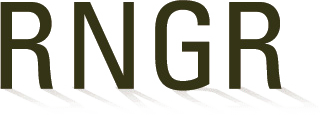
Abies (amabilis)
|
Lee Riley Horticulturist USDA FS - Dorena Genetic Resource Center 34963 Shoreview Road Cottage Grove, Oregon 97424 541-915-7324 541-767-5709 (fax) lee.riley@usda.gov |
|
| Family Scientific Name: | Pinaceae | ||
|---|---|---|---|
| Family Common Name: | Pine | ||
| Scientific Name: | Abies amabilis | ||
| Common Name: | Pacific Silver fir | ||
| Species Code: | ABAM | ||
| Ecotype: | Mt Hood National Forest, Oregon | ||
| General Distribution: | Abies amabilis is native to the Pacific Northwest, ranging from northern California to Alaska. A. amabilis grows at elevations of 300 to 2,100 m (1,000 to 7,000 ft) on coastal slopes of the Cascades. In the northern part of range, stands will be less than 300 m (1,000 ft) in elevation. A. amabilis usually occurs in uniform stands, growing approximately 30 to 70 m (100 to 230 ft) in height and is associated with western hemlock (Tsuga heterophylla). The geographic range is characterized by maritime or submaritime climate. | ||
| Propagation Goal: | Plants | ||
| Propagation Method: | Seed | ||
| ProductType: | Container (plug) | ||
| Stock Type: | 262 ml (16 in3) container | ||
| Time To Grow: | 18 months | ||
| Target Specifications: | Stock Type: Container seedling Root System: Firm plug in container. | ||
| Pre-Planting Treatments: |
Seeds are placed in fine mesh bags into a 1% hydrogen peroxide (3:1 water/3% hydrogen peroxide) soak for 24 hours, rinsed, and placed in water for an additional 24 hours. The bags are placed in sealed containers in refrigeration at 1 to 3 °C for 90 days. It is very important to check seeds weekly. If mold is evident, seeds should be treated with 1% hydrogen peroxide. |
||
| Growing Area Preparation/ Annual Practices for Perennial Crops: |
Greenhouse growing facility. Seeds are directly sown into containers. Seeds are lightly covered with nursery grit. Growing medium used is 40:20:20:20 peat:composted fir bark:perlite:pumice with Nutricote controlled release fertilizer (18N:6P2O5:8K2O with minors; 180-d release rate at 21C) at the rate of 1.5 gram Nutricote per 262 ml container. |
||
| Establishment Phase: | Germination is somewhat slow and uneven, and may take up to 3 to 4 weeks to be complete. Once the majority of germination has occurred, seedlings are fertilized for 3 weeks with soluble 12-2-14-6Ca-3Mg at 75 to 100 ppm. | ||
| Length of Establishment Phase: | 4 weeks | ||
| Active Growth Phase: |
A. amabilis may take up to 2 years to fill a container and reach appropriate target height for outplanting. During the first growing season, fertilization depends on weather and physiological needs. Soluble 20-9-20 NPK, 20-18-18 NPK, or 17-5-24 NPK at a range of 100 to 150 ppm is applied weekly throughout the growing season. In the spring of the second growing season, seedlings are hand-fertilized with Apex controlled release fertilizer (16N:5P2O5:10K2O; 6 to 7 month release rate at 21C) at the rate of 2 gram Apex per 444 ml container. Throughout the remainder of the growing season, seedlings are fertilized weekly with soluble 20-9-20 NPK or 20-18-18 NPK at a rate of 150 ppm. |
||
| Length of Active Growth Phase: | 20 weeks | ||
| Hardening Phase: | No dry-down is done to induce dormancy. Seedlings are moved to an outdoor growing area in early September. | ||
| Length of Hardening Phase: | 3 to 4 weeks | ||
| Harvesting, Storage and Shipping: |
Harvest Date: Mid-October Storage Conditions: Seedlings are usually outplanted in fall. No storage except in outdoor growing area. Plants are well irrigated prior to shipping and shipped in containers. Seedlings can be extracted in early December and frozen until spring outplanting. |
||
| Length of Storage: | 3 to 4 months | ||
| Other Comments: | Cones are produced two years after pollination. Cone production starts at about 20 to 30 years of age and produces about 400 seeds, with the viability at only about 6.3% to 35%. Seeds provide food for birds, rodents, and squirrels, while the leaves of growing shoots are browsed by elk. | ||
| References: |
Bonner FT, Karrfalt RB, Nisley RG, editors. 2008. The woody plant seed manual. Washington (DC): USDA Forest Service. Agriculture Handbook 727. 1223 p. Dorena Genetic Resource Center Propagation Records, unpublished. USDA Natural Resources Conservation Service. Abies amabilis (Douglas ex Loudon) Douglas ex Forbes Pacific silver fir. URL: https://plants.usda.gov/core/profile?symbol=ABAM (accessed 5 Aug 2019). |
||
Citation:
Riley, Lee E.; Boudreaux, Tanja. 2020. Propagation protocol for production of Container (plug) Abies amabilis Plants 262 ml (16 in3) container; USDA FS - Dorena Genetic Resource Center Cottage Grove, Oregon. In: Native Plant Network. URL: https://NativePlantNetwork.org (accessed 2025/10/14). US Department of Agriculture, Forest Service, National Center for Reforestation, Nurseries, and Genetic Resources.



